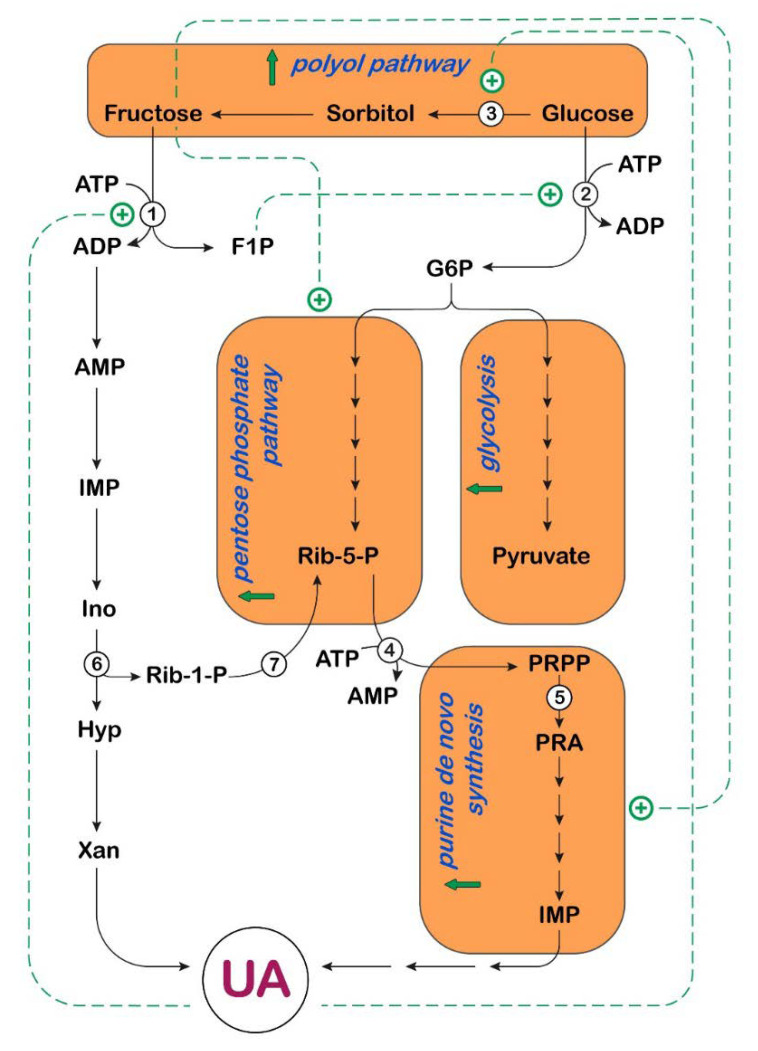Figure 3.
Effect of UA on carbohydrate and purine metabolism in liver. UA activates fructokinase (enzyme 1), increasing the formation of fructose-1-phosphate (F1P), which activates glucokinase (enzyme 2), by disrupting its interaction with glucokinase regulatory protein, contributing to the increase in the glycolytic flux. UA also activates aldose reductase (enzyme 3), enabling endogenous fructose for-mation through the polyol pathway. Fructose, through up-regulation of transketolase, favors the non-oxidative branch of the pentose phosphate pathway, for the synthesis of ribose-5-phosphate (Rib-5-P), essential for the formation of 5-phosphoribosyl-1-pyrophosphate (PRPP), a precursor of IMP, through the purine de novo synthesis pathway. The purine de novo pathway is also acceler-ated by depletion of adenine nucleotides, caused by a load of fructose (see Figure 2), which promotes a release in feedback inhibition of PRPP synthetase (enzyme 4) and amidophosphoribosyltransferase (enzyme 5). Rib-1-P generated during degradation of purine nucleotides by purine nucleoside phosphorylase (enzyme 6) is converted by phosphoribomutase (enzyme 7) to Rib-5-P, contributing to the acceleration of the purine de novo synthesis. G6P: glucose-6-phosphate; Ino: inosine; Hyp: hypoxanthine; Rib-1-P: ribose-1-phosphate; Xan: xanthine; PRA: phosphoribosylamine,  : activation;
: activation;  : increase.
: increase.

